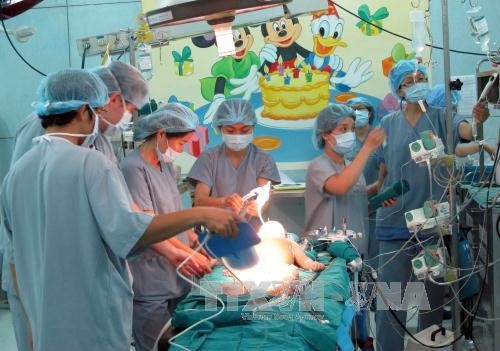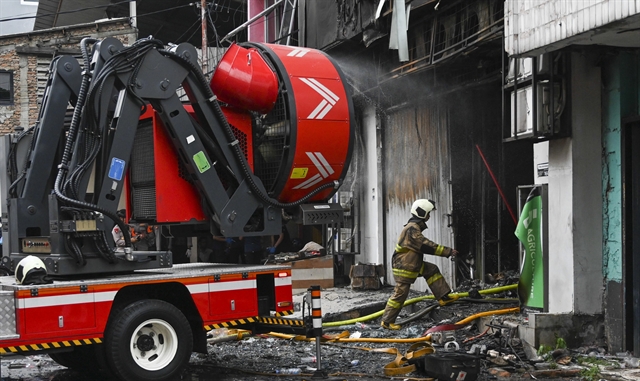 Society
Society

" />Doctors of HCM City Paediatrics Hospital 2 on Tuesday successfully performed a liver transplant operation from a living donor on a 13-month-old patient with cirrhosis of the liver after 10 hours of surgery.
 |
| A team of 40 domestic and foreign doctors successfully performed a liver transplant, using a liver from a living donor, on a 13-month-old patient diagnosed with cirrhosis of the liver. — VNA/VNS Photo Phương Vy |
HCM CITY — Doctors of HCM City Paediatrics Hospital 2 on Tuesday successfully performed a liver transplant operation from a living donor on a 13-month-old patient with cirrhosis of the liver.
The operation, which lasted 10 hours, was the hospital’s 10th liver transplant.
Dr Phạm Ngọc Thạch, the hospital’s deputy head, said the patient’s father had donated his liver for the transplant.
The patient and the donor are in the ICU, recovering well, Thạch said, adding that the patient was being watched for rejection and post-surgery infection for one week.
The child was initially diagnosed with a congenital biliary atresia at seven weeks old.
After the atresia diagnosis, doctors performed a Kasai procedure, developed by a Japanese surgeon in 1951, which surgically bypasses ducts that are blocked.
In the operation, surgeons use a small segment of the patient’s own intestine to replace the ducts at the spot where the bile is expected to drain. This segment not only connects to the liver but also to the rest of the intestine.
However, the baby developed cirrhosis of the liver at five months old.
Trần Thanh Trí, head of the hospital’s general surgery ward, said that only a liver transplant could prolong his life.
The team for the liver transplant included 40 doctors and nurses of Paediatrics Hospital 2 and other hospitals in the city as well as from Brussels Saint-Luc University Hospital, which had helped the hospital perform its first paediatric liver transplant in 2005.
Challenges
Dr Trần Đông A, the leader of the team, said transplanting a liver from a live donor in a child under two years old was a difficult transplant operation.
The hospital’s liver transplant is the same as other advanced countries, A said.
All nine patients that received a liver transplant from a live donor survived for at least one year, which is higher than the rate in the rest of the world, which is about 80 per cent.
Thạch said that the hospital’s first patient was in 2005, but only 10 children benefited from the transplant because the fees for each transplant were VNĐ500 million (US$22,222), not including other treatments.
The total fees can reach VNĐ1.5 billion ($66,666), he added.
Although the fees are lower than other countries, they are relatively high for most Vietnamese, he said.
A added that a shortage of donated organs in Việt Nam was one of the reasons for the low number of transplant operations. Most living donors in the country are members of a patient’s family.
Việt Nam has yet to allow organ donations from brain-dead children, although donations are permitted from brain-dead adults.
Thạch said there was high demand for liver transplants in the country, especially for children with diseases related to the liver.
The liver is the only organ in the human body able to regenerate, and within two or three months, it can develop around 60-80 per cent of its normal size. —VNS




